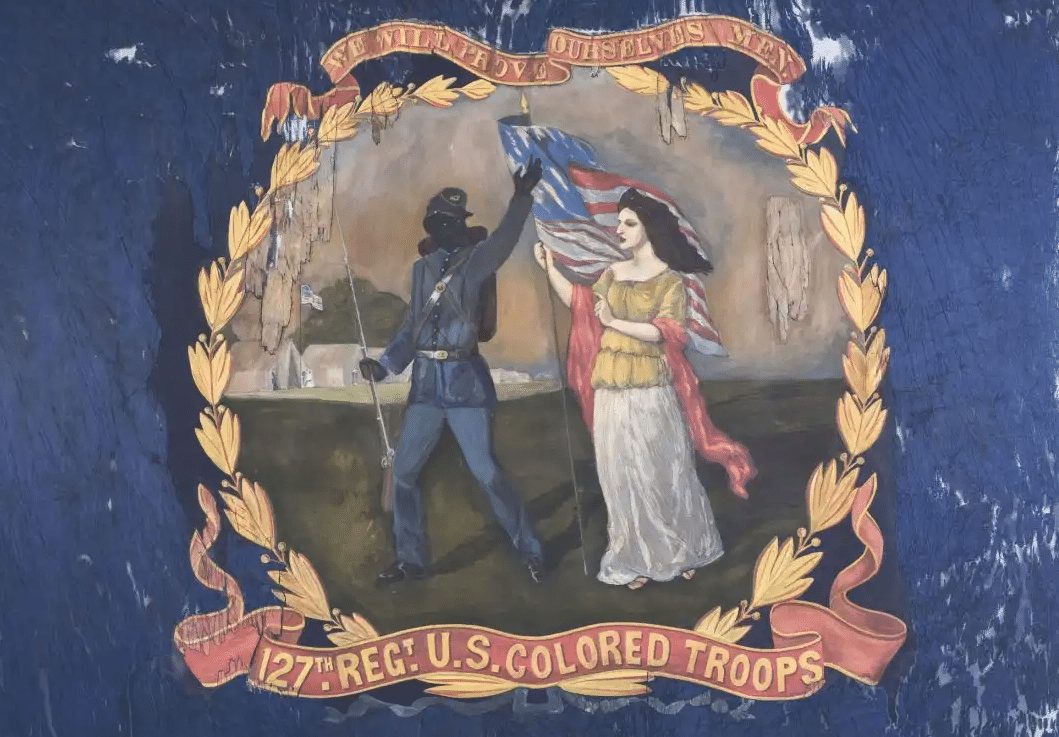The Atlanta History Centre has made a rare purchase, and boy is it a beaut! This USCT flag looks in great shape. I loved the added detail that there were famous flag-painters. Quite a niche specialty, but one that must have been a heyday during the war!

Measuring 72 by 55 inches, the silk banner depicts a black soldier carrying a rifle and bidding farewell to Columbia, the mythical goddess of liberty. A motto above the soldier reads “We will prove ourselves men.” On the flag’s reverse side, an American bald eagle bears a ribbon with the nation’s motto “E pluribus unum” — or, “Out of many, one.”
This is the only surviving example of 11 flags painted by African American artist David Bustill Bowser, who lived from 1820-1890. Bowser was a noted Philadelphia sign-painter, portraitist and anti-slavery activist noted for his portraits of John Brown and President Abraham Lincoln, the release said.
Source: Atlanta History Center acquires rare Civil War African American troop flag – Reporter Newspapers

